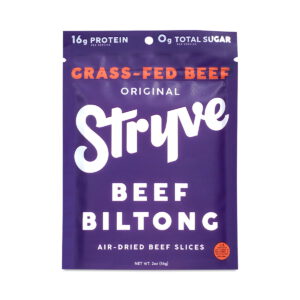- Understanding Nutritional Needs
- Setting Realistic Goals
- Creating a Balanced Menu
- Planning for Variety and Flavor
- Incorporating Family Preferences
- Tips for Meal Prep and Storage
When it comes to grocery shopping for a healthy meal plan, understanding what to put into your cart is vital. Whether you’re shopping locally or online, there are some strategies that can transform a mundane grocery trip into a fun and productive experience.
Start by making a list based on your nutritional needs, which can include whole grains, lean proteins, healthy fats, and plenty of fruits and vegetables. Here are some tips to consider:
- Shop seasonal and local: Not only do seasonal fruits and vegetables taste better, but they’re often more affordable. Visit local farmers’ markets or search for community-supported agriculture (CSA) options to enjoy fresh produce while supporting your local farmers.
- Go organic when possible: If you’re concerned about pesticides and other additives, look for organic produce, especially for the “Dirty Dozen” – a list of fruits and vegetables most contaminated with pesticides.
- Consider vegan options: Incorporating plant-based proteins such as lentils, chickpeas, and quinoa can diversify your meals and introduce new flavors. Look for tofu or tempeh as versatile meat alternatives.
- Be budget-conscious: Opt for frozen fruits and vegetables, as they’re just as nutritious as fresh ones and last longer. Additionally, buying in bulk can save you money, particularly on items like grains, nuts, and seeds.
- Read labels carefully: When selecting packaged foods, be vigilant about checking the ingredient list. Aim for products with short ingredient lists that you can actually pronounce and avoid those with added sugars or unhealthy fats.
- Safety first: If you’re shopping online, ensure you use reputable websites. Look for SSL encryption (indicated by https:// in the URL) to safeguard your personal information and never share sensitive data.
When shopping in-store, take a moment to inspect produce for freshness – look for vibrant colors, avoid any bruises, and smell for ripeness. Creating a cart full of healthy choices might even inspire your family to get involved in meal planning, making the process even more rewarding.
By integrating these simple yet effective shopping tips into your routine, you can ensure your grocery trips are not just about filling your cart, but about prioritizing your family’s health and well-being through a balanced nutritious diet.
Setting Realistic Goals
Setting realistic goals involves aligning your family’s nutritional needs with achievable and actionable objectives. To effectively establish these goals, consider your family’s lifestyle, current eating habits, and any health concerns that may influence your meal planning. A successful approach is to start small and gradually introduce changes, ensuring that everyone is on board and supportive of the plan.
Begin by assessing the current dietary patterns in your household. This could involve keeping a food diary for a week to understand what your family typically consumes. Analyze the data to identify areas that may require improvement, such as increasing vegetable intake, reducing processed foods, or managing portion sizes. From this assessment, you can set specific, measurable, achievable, relevant, and time-bound (SMART) goals.
Here is a comparison of different types of goals that families can set:
| Goal Type | Description | Example |
|---|---|---|
| Specific | Clearly define what you want to achieve. | Incorporate at least three servings of vegetables at dinner every week. |
| Measurable | Include a way to track progress. | Eat fruits or vegetables at every meal. |
| Achievable | Set realistic goals based on your family’s preferences and schedule. | Prepare two healthy meals at home each week. |
| Relevant | Goals should align with your family’s overall health objectives. | If managing weight, aim to reduce sugary drink consumption. |
| Time-bound | Establish a timeframe for accomplishing the goal. | Plan to try one new healthy recipe each week for a month. |
It’s essential to involve your family in the goal-setting process. Discuss potential goals during a family meeting, encouraging everyone to express their opinions and preferences. This collaborative approach not only enhances buy-in but also fosters a sense of ownership over the meal plan.
Another effective strategy is to create small challenges or competitions among family members, motivating them to strive for healthier eating. For example, you could challenge each family member to try a new fruit or vegetable each week, rewarding participation with a fun family activity.
Monitor progress regularly by revisiting your goals and adjusting them as needed. Celebrate milestones, no matter how small, to reinforce positive behaviors and keep the momentum going.
By setting realistic, achievable goals tailored to your family’s unique circumstances and preferences, you’ll create a sustainable framework for a healthy meal plan that encourages lasting change and improved well-being for everyone.
Creating a Balanced Menu

Crafting a balanced menu necessitates strategic grocery shopping to stock your kitchen with healthful ingredients that align with your family’s dietary needs. Begin by considering the essentials your household requires for a wholesome meal plan. This includes a mix of proteins, carbohydrates, and fats, alongside a rainbow of fruits and vegetables to ensure a diverse intake of nutrients. Here are some engaging tips to elevate your grocery shopping experience:
- Explore health food sections: Many grocery stores have dedicated sections featuring organic products, gluten-free items, or vegan alternatives. Take the time to explore these areas — you might discover some unique products that add excitement to your meals.
- Utilize grocery store apps: Many supermarkets offer apps that include shopping lists, digital coupons, and specials. This can not only save you time but also help you find budget-friendly options. For instance, tracking sales can lead you to high-quality meats or organic produce at discounted rates.
- Buy whole foods: Aim for whole, unprocessed options whenever possible. Foods like brown rice, oats, and beans are not only nutritious but also cheaper when purchased in bulk. They can form the base for countless meals!
- Emphasize plant-based options: Incorporating more plant-based proteins can be both healthful and sustainable. Consider stocking your pantry with items like black beans, lentils, or chickpeas. Get creative — try making homemade veggie burgers or chickpea salads that are both tasty and nutritious.
- Prioritize quality fats: Healthy fats from sources like avocados, nuts, and seeds are crucial for satiety and overall health. They can easily be included in your family’s meals; sprinkle nuts on salads or blend avocados into smoothies for a creamy texture.
- Don’t shy away from frozen foods: Frozen fruits and vegetables are often just as nutritious as fresh ones and are perfect for meal prepping. Stocking up on frozen berries for smoothies or green beans for stir-fries can streamline your meal prep significantly.
- Mindful online shopping: When shopping online, ensure you’re purchasing from reputable sites. Look for customer reviews and check product return policies. Always prioritize safety by avoiding sites that seem suspicious or lack adequate security measures.
- Participate in subscriptions: Many companies offer subscriptions for produce boxes or service meal kits that deliver fresh, healthy ingredients right to your door. These can make trying new foods fun and take the guesswork out of what to prepare.
Prioritize seasonal ingredients for maximum flavor and nutrition. If you’re unsure, consult a seasonal produce guide to know what’s in-season near you. Not only does this improve the taste of your meals, but it also supports local farmers and reduces your carbon footprint.
Engaging your family in the shopping process can also enhance the experience. Encourage children to pick out a new fruit or vegetable during each visit. This not only empowers them to make healthier choices but can lead to interesting discussions about nutrition and cooking at home.
As you fill your cart, keep in mind that grocery shopping is not just a task; it’s an opportunity to be creative and intentional about what your family consumes. With a focused strategy, you can enjoy the process while cultivating a healthy meal plan that everyone will appreciate.
Planning for Variety and Flavor
To ensure your family’s meals remain exciting and enjoyable, it’s essential to incorporate variety and flavor into your meal planning. A monotonous menu can quickly dull enthusiasm for healthy eating, making it vital to explore new tastes and textures regularly. Here are several strategies to bring vibrancy and appeal to your healthy meal plan.
Start by diversifying your sources of protein. While chicken, beef, and fish are common staples, don’t hesitate to experiment with alternatives like turkey, pork, and plant-based proteins such as beans, lentils, and quinoa. Each offers a unique flavor and texture that can transform standard dishes. Rotate between cooking methods like grilling, baking, or stir-frying to create different culinary experiences, as the method can dramatically change how a protein tastes.
Incorporating an array of colorful fruits and vegetables is another effective way to enhance your meals. Not only do they provide essential vitamins and minerals, but they add visual appeal that can excite the palate. When planning, consider creating a theme for each week, such as a focus on Mediterranean, Asian, or Mexican ingredients. This can inspire you to try new recipes featuring seasonal produce and spices that complement the chosen theme.
Experimenting with herbs and spices can take your dishes to new heights. Fresh herbs like basil, cilantro, and parsley can be added generously for an uplifting flavor, while spices such as cumin, paprika, and turmeric can add warmth and depth. Create a spice rack with various options and encourage family members to experiment by adding their favorites to the meals they prepare.
Another way to keep meals captivating is to introduce meatless days into your weekly routine. Exploring vegetarian and vegan recipes can unveil a range of delicious flavors that might not otherwise appear on the dinner table. Consider dishes such as hearty bean chili, vegetable stir-fries, or grain bowls topped with an assortment of toppings. This not only diversifies your menu but also encourages healthier eating habits.
Don’t forget about international cuisine; global food options can provide fresh flavor profiles while making meal times fun. Organize family cooking nights where each member could pick a dish from a different country, allowing everyone to learn about and experience diverse culinary traditions.
Moreover, involve the family in discussions about meals. Ask for their input on which dishes they’d like to try or ingredients they feel adventurous about using. This involvement creates an investment in the meal plan and often leads to greater excitement about upcoming meals.
“Variety is the spice of life.” – William Cowper
Lastly, it’s essential to occasionally treat your family to healthy versions of their favorite comfort foods. By modifying traditional recipes with more nutritious ingredients, such as using whole grain pasta or reducing added sugars, you can still provide familiar flavors without sacrificing health.
By integrating these tips into your meal planning process, you can ensure that your healthy meal plan remains flavorful, diverse, and engaging for your family, ultimately fostering a love for nutritious eating.
Incorporating Family Preferences
 To successfully incorporate family preferences into your meal planning, begin by having open conversations about their likes and dislikes. This engagement is crucial, as it not only fosters a sense of inclusion but also empowers family members to feel they have a voice in the choices being made. Gather everyone for a meal planning session where each person can suggest at least three healthy meals they’d love to eat throughout the week. This approach can help reveal hidden preferences and may even introduce new favorites.
To successfully incorporate family preferences into your meal planning, begin by having open conversations about their likes and dislikes. This engagement is crucial, as it not only fosters a sense of inclusion but also empowers family members to feel they have a voice in the choices being made. Gather everyone for a meal planning session where each person can suggest at least three healthy meals they’d love to eat throughout the week. This approach can help reveal hidden preferences and may even introduce new favorites.
Take the time to analyze your family’s favorite foods, and consider how you can adapt these beloved dishes into healthier versions. For instance, if pizza is a family favorite, explore options like whole-grain crust topped with fresh vegetables, lean proteins, and low-fat cheese. This way, you maintain the essence of the dish while making it align with your healthy meal plan.
Variety is essential for keeping meal times exciting, but so is familiarity. Incorporate their favorite flavors and textures into new recipes. If your family enjoys spicy foods, experiment with incorporating heat into healthy dishes with ingredients like chili peppers or hot sauces. Utilizing flavors from various cuisines—such as Italian, Mexican, or Asian—can create an enjoyable exploration of tastes.
Designing a meal calendar that highlights both new and familiar recipes can foster anticipation and excitement for meals. Each week might feature themed nights, like “Taco Tuesday” or “Stir-Fry Saturday,” where you rotate preparations and ingredients yet remain focused on nutritious choices. This way, family members can also help with the preparations on their favorite nights, fostering teamwork in the kitchen.
Another vital aspect is to prioritize inclusivity with dietary restrictions or preferences. If someone in the family follows a special diet or has food allergies, ensure that alternative options are available, allowing everyone to partake in meals. Involving your family in grocery shopping can also make the process more enjoyable. Allow them to choose fruits, vegetables, or snacks that excite them, promoting a collaborative effort towards healthier eating.
Regularly revisit your meal plan, as tastes and preferences can evolve. Establish a rhythm where the family shares their thoughts on what works and what doesn’t. Implementing feedback mechanisms encourages ongoing dialogue about nutrition and healthy eating habits.
The goal is to create an environment where healthy eating feels appealing rather than restrictive, igniting a passion for nutritious meals that everyone can enjoy together.
- How can I involve my family in meal planning?
- Involve your family by holding regular discussions about meals they enjoy and want to try. Encourage everyone to suggest recipes or ingredients for the week, ensuring their preferences are considered and included.
- What if my family dislikes healthy foods?
- Focus on transforming their favorite meals into healthier versions. Experiment with new recipes that incorporate familiar flavors, and gradually introduce healthier ingredients without compromising taste.
- How do I ensure my meal plan has variety?
- Create a rotating menu that includes different cuisines and cooking methods. Introduce themed nights to explore diverse recipes and maintain excitement about upcoming meals.
- Can I adjust my meal plan based on seasonal produce?
- Absolutely! Adjusting your meal plan to include seasonal produce not only enhances flavor but also makes it easier to find fresh, affordable ingredients. Use a seasonal produce guide to help with selection.
- What if someone in my family has dietary restrictions?
- Always consider dietary restrictions when planning meals. Offer alternative options that align with their needs, ensuring everyone can enjoy the meal together and feel included.
- How can I make grocery shopping more enjoyable?
- Turn grocery shopping into a fun family outing where everyone can choose snacks or ingredients. Create games or challenges, such as picking out a new fruit or vegetable to try each week.
- How often should I revisit and adjust my meal plan?
- Regularly revisit your meal plan, ideally every few weeks, to assess how well it is meeting your family’s preferences and nutritional goals. Open discussions can reveal what changes might be beneficial.
Tips for Meal Prep and Storage
When it comes to meal prep and storage, making the process efficient and enjoyable can transform the way you handle your family’s healthy meal plan. Here are some entertaining and practical tips that will streamline your meal preparation while ensuring your culinary creations remain fresh and appealing throughout the week.
To start, set aside dedicated time for meal prep each week. Choose a day that works best for your family, like Sunday afternoons, where everyone can pitch in. Turn it into a fun family activity with music playing in the background, and involve your children by assigning them age-appropriate tasks, such as washing vegetables, measuring ingredients, or mixing bowls. This not only aids in execution but also enhances kitchen skills for all ages.
Begin with bulk batch cooking. Prepare large quantities of staples like grains, beans, or roasted vegetables to use throughout the week. For instance, cook a big batch of quinoa to serve as a base for salads, bowls, or sides. Store portions in clear, labeled containers to easily access them when creating meals. This strategic approach minimizes cooking time during busier weekdays.
- Utilize freezer-friendly meals: Cooking and freezing soups, stews, or casseroles is a great strategy for having healthy meals on hand. Labels can help keep track of what’s inside, and it becomes a simple task to pull something from the freezer on a busy night.
- Invest in quality storage containers: Choose BPA-free plastic or glass containers that are compartmentalized for salads, snacks, and leftovers. They help maintain freshness while allowing you to portion out meals conveniently. Also, consider containers that are microwave and dishwasher safe for easy reheating and cleaning.
- Weekly theme prep: Assign a theme for your meal prep—such as “Meatless Monday” or “Taco Tuesday”—to keep things organized and fun. This not only makes planning simpler but also encourages trying new ingredients or recipes week to week.
- Label everything: When storing prepped foods, use labels with dates, meal names, and ingredients to avoid confusion. You can use painters’ tape and a permanent marker for an easy, wipeable solution that you can adapt week by week.
- Adopt the “one-pot” philosophy: Consider one-pot meals which minimize cooking and cleaning time. Dishes like stir-fries, slow cooker chili, or sheet pan dinners are time-savers that can incorporate multiple food groups in a single dish!
When it comes to ingredient safety, always wash fruits and vegetables thoroughly to remove any pesticides and dirt. If you’re using non-organic produce, peel them if necessary to reduce exposure to contaminants. For proteins, ensure to store raw meats below ready-to-eat items in the fridge to prevent cross-contamination.
For online shopping safety, research grocery delivery services that prioritize hygiene and incorporate stringent quality checks. Look for user ratings and reviews before purchasing, and favor those that deliver local, organic produce. Always check their return policy; this safety net can help avoid potentially spoiled or unsatisfactory items. Opt for evening or early morning deliveries, as this minimizes the risk of foods sitting in warmer conditions during transit.
By integrating these strategies, your family’s meal prep can transform into a well-organized and enjoyable process. You’ll not only save time during the hectic weekdays but also foster a collaborative environment that encourages healthy eating habits among all family members.
New Customers Offer!
Free Gift for the new customer
$24 Value, When You Subscrib Visit Thrive Market












